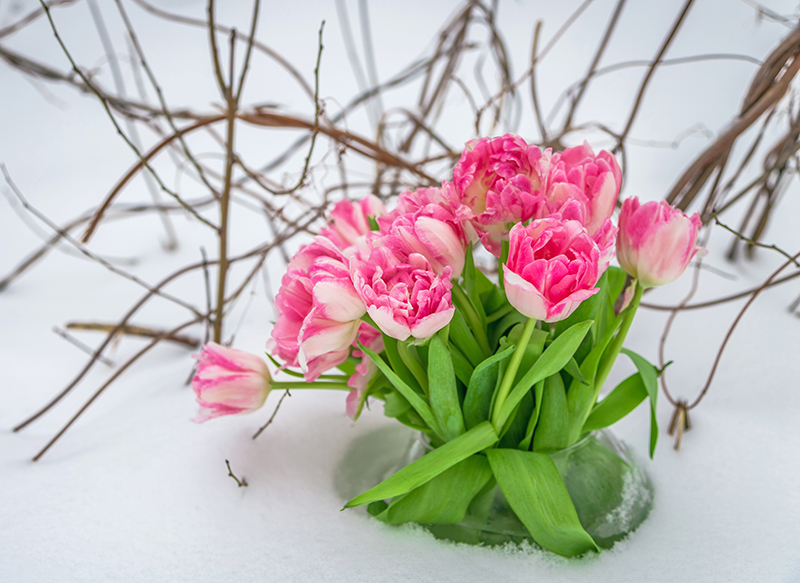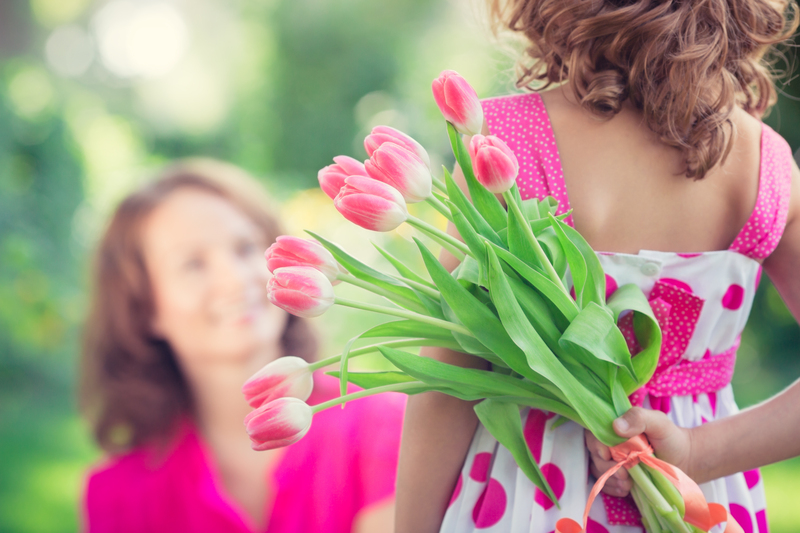Simplify Flower Care with These Proven Preservation Strategies
Posted on 02/07/2025
Simplify Flower Care with These Proven Preservation Strategies
Flowers hold a special place in our homes and lives with their vibrant colors and refreshing fragrance. Whether you enjoy picking bouquets from your garden, receiving fresh blooms as gifts, or purchasing arrangements for special occasions, keeping flowers looking their best for as long as possible can be a challenge. Luckily, modern flower care offers proven strategies for preservation that make it easier than ever to maintain the freshness and beauty of your floral arrangements. In this comprehensive guide, you'll discover creative and effective tips to simplify flower care while maximizing vase life.
Why Proper Flower Preservation Matters
Flowers are not just decorative--they bring joy, reduce stress, and even purify the air. However, without proper care, fresh flowers can wilt and deteriorate quickly. Understanding the science of flower longevity empowers you to keep your arrangements stunning for longer periods. Utilizing the right preservation strategies ensures:
- Enhanced freshness and color intensity
- Longer vase life
- Reduced need for frequent replacements
- Better return on your flower investment
- Minimal waste and environmental impact
By implementing these proven methods, you'll enjoy your favorite blossoms for days or even weeks beyond their typical lifespan.

Understanding the Basics of Flower Care
The Science Behind Flower Preservation
To truly simplify flower care, it's important to grasp what causes flowers to wilt. Fresh-cut flowers rely on water uptake to maintain their health. Once cut from the parent plant, they gradually lose moisture, nutrients, and energy, which hastens their decline. The key to preserving blooms lies in replicating their ideal living conditions and preventing bacteria buildup, which commonly clogs stems and inhibits water absorption.
Major factors impacting flower life include:
- Temperature: Too much heat speeds up wilting; colder environments help preserve freshness.
- Sunlight: Direct sunlight increases transpiration and shortens vase life.
- Water quality: Flowers need clean, fresh water to avoid stem blockages.
- Bacteria and fungi: These microorganisms accelerate decay.
- Nutrients: Cut flowers need supplemental food to thrive after separation from the plant.
Choosing the Right Flowers for Longevity
Not all flowers are created equal when it comes to vase life. Some naturally last longer than others. For low-maintenance, long-lasting arrangements, consider these resilient varieties:
- Chrysanthemums
- Carnations
- Alstroemeria
- Orchids
- Sunflowers
- Gladiolus
- Lilies (with proper care)
Opting for sturdy, robust blooms makes flower care more manageable and maximizes display duration.
Step-by-Step Proven Strategies for Flower Preservation
1. Trim Stems for Better Water Uptake
The first step in any flower preservation strategy is trimming the stems. Use sharp, clean scissors or a knife and cut each stem at an angle under running water. This increases surface area and prevents air bubbles from forming, which can block water absorption. Re-cut stems every 2-3 days for best results.
2. Remove Lower Leaves and Foliage
Leaves sitting below the waterline quickly rot and foster bacterial growth that harms your flowers. Always remove excess foliage from the stems before placing them in a vase. This simple act keeps water clean and extends bloom life.
3. Use Clean Vases and Fresh Water
Bacteria is the enemy of fresh flowers. Start with a thoroughly washed vase to minimize contamination. Fill with cool, fresh water, changing it every other day and cleaning the vase each time to prevent invisible bacterial buildup.
4. Incorporate Flower Food or Homemade Preservatives
Commercial flower food packets provide essential nutrients and discourage bacteria. If not available, try easy homemade alternatives:
- Mix 1 teaspoon sugar, 1 teaspoon lemon juice, and a few drops of bleach in every quart of water.
- Add a copper penny or aspirin to the vase to slow bacterial growth.
These techniques are among the most proven strategies to preserve flowers and keep arrangements lively.
5. Store Flowers in the Ideal Environment
Place arrangements in a cool, indirect light location. Avoid windowsills, heat vents, and appliances that emit warmth. For maximum preservation, overnight refrigeration can dramatically increase vase life--just don't store with fruits, as emitted ethylene gas will prematurely age blooms.
6. Remove Wilting Flowers Promptly
A single wilting flower releases compounds that hasten the decline of its healthy neighbors. Prune wilted or dead blooms from your arrangement as soon as they appear. This not only improves aesthetics but also reduces the spread of decay-promoting agents.
Advanced Flower Preservation Techniques
1. Air Drying for Keepsake Blooms
Sometimes, you want to cherish floral memories. Air drying is an ancient, chemical-free method to preserve flowers long-term. Group stems, tie with string, and hang upside-down in a dry, dark, well-ventilated area for two weeks. Dried flowers add rustic charm to any setting and require virtually no maintenance.
2. Pressing Flowers for Art and Decor
Pressing is an excellent way to create unique crafts or sentimental gifts. Place blooms between absorbent papers and weigh them down with heavy books for several days. Pressed flowers hold color well and can decorate cards, bookmarks, or framed displays.
3. Silica Gel Flower Preservation
For best color retention, use silica gel crystals (available at craft stores). Bury flowers gently in the gel within an airtight container for a week. This professional-grade method is ideal for preserving bouquets or sentimental flowers, such as wedding or anniversary arrangements.
Common Flower Care Mistakes to Avoid
Even with the best intentions, it's easy to jeopardize arrangements by overlooking crucial steps. Here are the top mistakes--and how to avoid them:
- Using dirty vases or tools
- Failing to trim stems regularly
- Leaving foliage underwater
- Neglecting to change water often
- Placing flowers in direct sunlight or near heat sources
- Ignoring the need for nutrition with flower food
*Awareness* of these pitfalls will further simplify your flower care routine and ensure longer-lasting arrangements.
Seasonal Tips for Optimal Flower Preservation
Spring and Summer
- Watch for mold and bacteria growth due to humidity; change water daily.
- Keep arrangements away from windowsills exposed to intense sunlight.
- Flowers may require more frequent stem trims to maintain water flow.
Autumn and Winter
- Protect blooms from drafts and sudden temperature changes.
- Central heating may accelerate wilting; keep flowers in cooler rooms.
- Add extra flower food to compensate for drier indoor air.
Pro Tips from Florists for Effortless Flower Care
Many professionals use insider tricks to guarantee maximum freshness. Here are some expert recommendations:
- Mist flower petals lightly with water to maintain hydration--especially for delicate varieties.
- De-thorn roses carefully to prevent stem bruising and subsequent infection.
- If possible, buy locally grown, freshly cut flowers, as travel and storage reduce flower vitality.
- Rotate your arrangement periodically to ensure even light exposure and encourage symmetrical growth.
Eco-Friendly Flower Preservation Alternatives
Sustainable flower care not only preserves the environment but may also boost flower longevity. Consider the following green options:
- Collect and compost wilted flowers for garden enrichment.
- Use organic flower food made from household ingredients like citrus, vinegar, or natural enzymes.
- Choose biodegradable or reusable vases and containers.
- Opt for seasonal, locally sourced flowers whenever possible to reduce carbon footprint.
Embracing eco-conscious flower preservation aligns your love of blooms with care for the planet.

Frequently Asked Questions About Simplified Flower Care
How often should I change the water in my flower vase?
It's best to refresh the water every 1-2 days to inhibit bacterial growth and provide optimal hydration.
Is flower food necessary, or can I skip it?
While not mandatory, flower food significantly enhances preservation. It feeds stems and keeps water clean. In absence of commercial options, try the homemade alternatives mentioned above.
Can I revive flowers that have already wilted?
Sometimes! Trim stems, submerge them in lukewarm water, and let them rest in a cool dark place for several hours. Severe wilting may be irreversible, but this technique offers a chance for partial recovery.
Conclusion: Enjoy Long-Lasting Beauty with Simple Flower Preservation Methods
By following these proven preservation strategies, you'll simplify flower care for any bouquet, centerpiece, or arrangement. Remember to start with clean tools, trim stems and leaves, refresh water regularly, nourish with flower food, and position blooms away from direct sunlight and heat. When you understand the basics of cut flower preservation, you unlock the secret to vibrant arrangements that last well beyond their expected display time.
Whether you love decorating your space with fresh blossoms or seek to keep special bouquets alive, these easy, effective flower care tips empower you to enjoy the beauty and fragrance of flowers every day. With a touch of attention and the right knowledge, any flower enthusiast can maintain lush, colorful displays with minimum effort. Start putting these strategies to use, and watch your flowers thrive like never before!
Latest Posts
Hydrangea Maintenance for Long-Lasting Elegance
Picking the Ideal Flowers for a Birthday Gift
See Your Spirit in Bloom: What Flower Resembles You
Simplify Flower Care with These Proven Preservation Strategies





